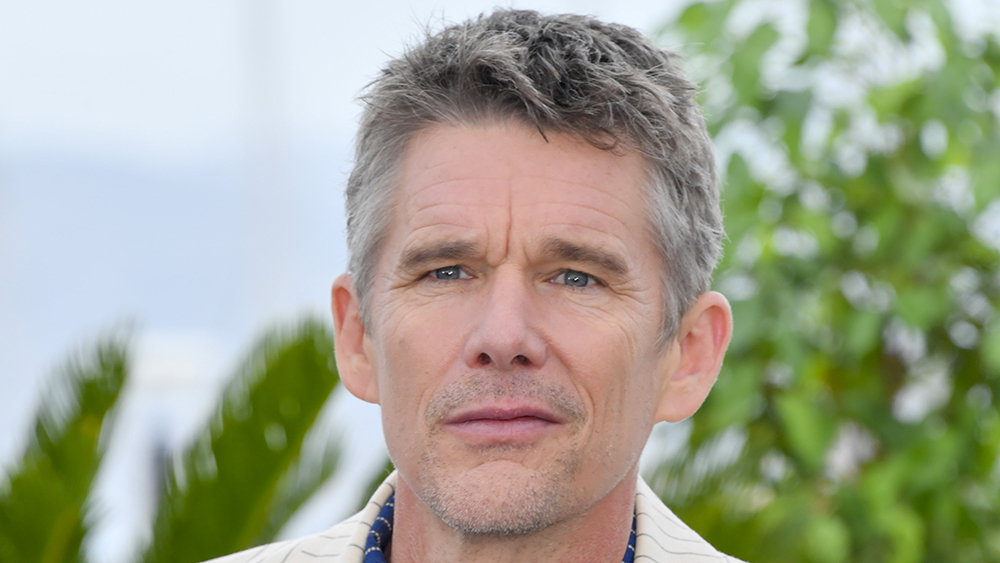
I first came across the name Flannery O’Connor when I was in high school idly scanning the spines of books in my parents’ living room. I read a couple of the stories — “The Lame Shall Enter First” and “Everything That Rises Must Converge” — and became intrigued by the fact that my mother ranked O’Connor with the likes of William Faulkner and Tennessee Williams when it came to conjuring the white, post-Civil War, Southern persona.
Decades later, my daughter Maya introduced me to another side of O’Connor by giving me the writer’s “Prayer Journal” — a young woman’s search for meaning through musings addressed to God, all written in a lined notebook. It was easy to fall in love with this achingly earnest young artist.
“Dear God,” she wrote. “I cannot love Thee the way I want to. You are the slim crescent of a moon that I see and my self is the earth’s shadow that keeps me from seeing all the moon… Please let Christian principles permeate my writing and please let there be enough of my writing (published!) for Christian principles to permeate… I do not mean to be clever although I do mean to be clever on 2nd thought and like to be clever & want to be considered so…”
When preparing an audition piece for Julliard in 2017, Maya adapted some of Flannery’s journal entries into a monologue. “Thousands of kids audition,” she told me. “I don’t want to do Juliet’s “Come Gentle Romeo” speech — they probably hear it 25,000 times a year.”
Maya first performed the journal entries for the family in our kitchen one freezing winter night seven years ago. We were completely blown away. And then when she was accepted, I think she interpreted it as a kind of nod from the universe that she was on the right track. Flannery became a kind of touchstone.
A few years after the success of “Stranger Things,” Maya approached me with the idea of making a film about O’Connor, and my heart soared. Immediately, I saw O’Connor’s spiritual journey as a perfect opportunity to create a film about the intersection of faith, imagination and creativity.
But early in the process of writing “Wildcat,” I stumbled on Paul Elie’s article, “How Racist Was Flannery O’Connor?” published in The New Yorker in 2020. The piece was profoundly troubling. In it, Elie highlights some ugly racist comments of O’Connor’s from previously unpublished personal letters between the writer and her friends and family.
A bit more googling on the subject of O’Connor’s alleged racism informed me that, in 2020, Loyola University Maryland removed her name from one of its dormitories for precisely this reason. I was shocked. I had thought of O’Connor as a brilliant revelatory humorist unafraid to poke her finger into the wounds of our country, often writing of bigoted characters who faced gruesome ends: goring by bulls, point-blank execution, heart attacks. But it confounded me that the same author could also entertain casual bigotry in her personal correspondence.
I called Maya to talk over whether we should make this film. Is there a place in today’s cultural climate to tell the story of an American genius who also displayed abhorrent prejudices? What was O’Connor’s fundamental attitude toward people of color? Did the master provocateur’s tongue obscure her views or reveal them?
Turns out, scholars have been examining O’Connor’s relationship to race since the 1970s. Alice Walker movingly describes O’Connor’s legacy in her essay “Beyond the Peacock: The Reconstruction of Flannery O’Connor,” written 45 years ago.
“Essential O’Connor is not about racism at all,” Walker writes, “which is why it is so refreshing, coming, as it does, out of such a racial culture. If it can be said to be ‘about’ anything, then it is ‘about’ prophets and prophecy, ‘about’ revelation, and ‘about’ the impact of supernatural grace on human beings who don’t have a chance of spiritual growth without it. … She destroyed the last vestiges of sentimentality in white Southern writing; she caused white women to look ridiculous on pedestals, and she approached her black characters — as a mature artist — with unusual humility and restraint. She also cast spells and worked magic with the written word. The magic, the wit, and the mystery of Flannery O’Connor I know I will always love.”
In a 2001 New Yorker piece subtitled “Flannery O’Connor on Race and Religion in the Unreconstructed South,” cultural critic Hilton Als wrote, “Race and faith and their attendant hierarchies and delusions are O’Connor’s great theme. … But readings of this American master often overlook the originality and honesty of her portrayal of Southern whiteness. Or, rather, Southern whiteness as it chafed under its biggest cultural influence — Southern blackness. It’s remarkable to consider that O’Connor started writing … just a decade after Margaret Mitchell’s ‘Gone with the Wind.’ O’Connor’s most profound gift was her ability to describe impartially the bourgeoisie she was born into, to depict with humor and without judgment her rapidly crumbling social order.”
The artist, activist, and educator Benny Andrews illustrated a limited edition of one of O’Connor’s books in 2005 and wrote, “So why did I take this dare? I’ve looked into her works, and I have found revelations. No, I would never have been invited to her home…but I’ll say up front, Flannery O’Connor is in my mind a great writer. She depicted things bigger than the physical world she lived in. Nevertheless, she also retained a lot of the very worst she lived in.”
In the 2020 book “Radical Ambivalence: Race in Flannery O’Connor,” Fordham professor Angela Alaimo O’Donnell explores passages of O’Connor’s work “in an effort to arrive at an understanding of how a writer who created powerful anti-racist parables … was in her personal correspondence also capable of entertaining and confessing racist thoughts … and who atoned for her sins by writing anti-racist fiction that exposed the ugliness and horror of racism in the people she lived in the midst of, and in herself.…”
O’Donnell’s study was closely followed by Elie’s New Yorker piece, which led to a profusion of rejoinders in various publications. Mark Bosco, the Jesuit director of the 2020 documentary, “Flannery,” described O’Connor’s stories as written “for what we might call recovering racists — those who always need reminding of their white privilege. O’Donnell shows that O’Connor would include herself in that group, as could many white people today.”
Amy Alznauer notes, in her Bitter Southerner essay, “On Flannery O’Connor & Race,” from 2020, that distinguished writers including the likes of Toni Morrison, Alice Walker, and Hilton Als, “never sidestep O’Connor’s racism. Rather, it is known implicitly and viscerally as an ingrained fact.”
Well, so much for the world of academia. I quickly learned that just talking to anyone familiar with O’Connor sparked intense conversations. Both the ideas in her writing and her unorthodox personality are fertile ground for dialogue about virtue-signaling, truth, accountability, our ability to evolve and forgive, the concept of grace, and race.
I talked with present-day artists, friends, colleagues, as well as with the extraordinary team at the DreamYard Project, who organize anti-racist programming in New York schools. Most memorably, I talked with the Archbishop of Louisville, Shelton Fabre, who began our conversation by looking me square in the eye and asking, “Why do you want to make a movie about a racist?”
After speaking at length, the conversation closed with both of us laughing as we took turns quoting her back and forth:
“She would have been a good woman if it had been somebody there to shoot her every minute of her life,” he said.
“She looked at nice young men as if she could smell their stupidity,” I offered.
Finally, the Archbishop said, “Just tell the truth and shame the devil.”
In reading O’Connor’s body of work — which includes novels, stories, essays, journals, letters — you encounter an immensely complex human being. She’s supremely witty, frequently arrogant, and always provocative. She sets out to shock, even in her correspondence with her friends, with powerful overstatement, irony, and wry, even acerbic wit. She takes a contrarian point of view whenever she senses anyone claiming the moral high ground. The search for the grace of God at work in a brutal world was her life’s mission: “My writing,” she said, “is always about the action of grace in territory largely held by the devil.”
She subscribed mightily to the verse from the gospel of Matthew, “Thou hypocrite first cast out the beam of thine own eye. …” She was deeply concerned with scouring the mote in her own eye, attuned to the ways people can deceive and glorify themselves and damage each other in the process. O’Connor once said, “I write to discover what I know.” As a woman born into the Jim Crow South, her beliefs were actively evolving over the course of her short life.
Influenced by the Jesuit philosopher Pierre Teilhard de Chardin’s writings on the intrinsic interconnectivity of all of God’s creations, she borrowed the title of one of her last stories from him: “Remain true to yourself but move ever upward toward greater consciousness and greater love. At the summit you will find yourselves united with all those who, from every direction, have made the same ascent. For everything that rises must converge.”
That story, along with “Revelation,” exposes the racism of the hypocritical white world she knew intimately. Today, we are expected to acknowledge — and condemn — our own implicit racism. I don’t know if O’Connor always condemned it, but she certainly acknowledged it in herself and painted a harsh picture of its ugliness.
The more I learned, the more clearly Flannery O’Connor grew as a knotty but extremely important subject for exploration. As O’Donnell puts it, “The voices of artists who offer a perspective that seems out of step with our moment are often the very people we should be harkening to. The canceling of a writer who possesses the wisdom and the power of Flannery O’Connor demonstrates our impoverished imaginations, our narrowness, and our inability to embrace complexity.”
Paul Elie’s article ends by indicating “a way forward, rooted in the work.” We have made “Wildcat” out of our love for that work, and for the genius — the flawed, human, paradoxical genius — who authored it. We hope that this film can be a step on the way forward.



